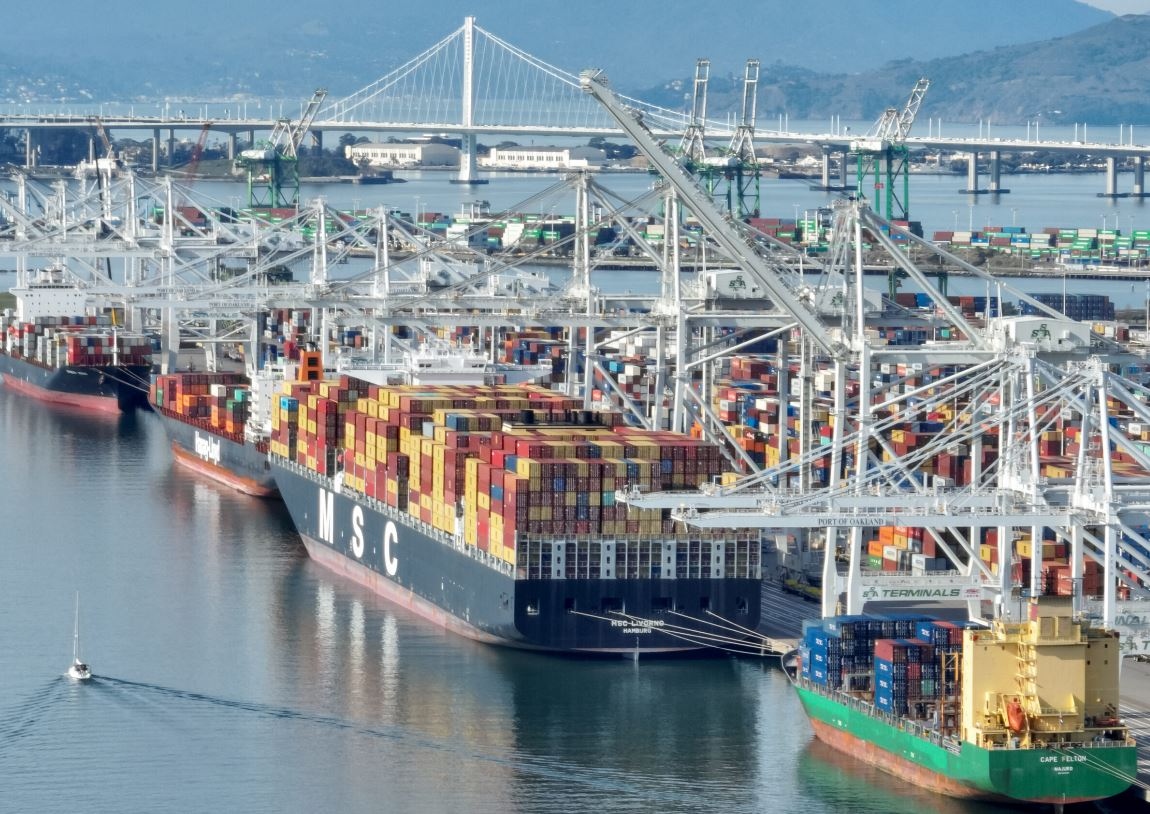Global shipping rates continue to fall
Posted on: 08/09/2025
 Container ship anchored at the Port of Oakland, California, USA. Photo: Port Technology
Container ship anchored at the Port of Oakland, California, USA. Photo: Port Technology
According to the World Container Index (WCI) of shipping consultancy Drewry Shipping Consultants, in the week ending September 4, the average ocean freight rate on eight major shipping routes in the world decreased by 1% compared to the previous week, down to US$2,104 per 40-foot container (FEU).
This fare is down 40% from its high in mid-June.
Trans-Pacific rates jumped unexpectedly last week, but sharp falls in Asia-Europe rates offset the increase.
After 11 consecutive weeks of declines, trans-Pacific spot rates are rising again. Spot rates from Shanghai, China, to Los Angeles, US, rose 8% to $2,522 per FEU, while rates from Shanghai to New York rose 12% to $3,677 per FEU. However, Drewry forecasts that these rates are unlikely to be sustained without further capacity cuts.
Spot rates on Asia-Europe routes fell this week, with Shanghai-Rotterdam (Netherlands) rates down 10% to $2,385/FEU.
Despite steady demand and port congestion in Europe, growing overcapacity has pushed spot rates on the Asia-Europe trade lanes lower, with Drewry predicting that spot rates on these lanes will continue to decline in the coming weeks.
Looking further ahead, Drewry said global spot freight rates will fall further in the final months of the year. The volatility and timing of these changes will depend on future tariffs imposed by US President Donald Trump and changes in vessel capacity related to the US’s imposition of high port charges on Chinese vessels, which remain uncertain.
Ocean freight rates from China to the US West Coast have fallen 68% from their June highs, a sign that this year’s peak shipping season is coming earlier and shorter than usual.
The continued decline in shipping rates also reflects cautious sentiment among some U.S. retailers and manufacturers, who are cautious about placing new orders ahead of the busy fall-winter shopping season amid uncertainty over tariffs, trade policy and concerns about consumer spending in the world’s largest economy.
The White House's tariff policy is now in a precarious position after a federal appeals court ruled that Mr. Trump exceeded his authority by imposing broad global tariffs including reciprocal duties.
But the court stayed the tariffs until mid-October to give the White House time to appeal to the US Supreme Court.
“US importers are saying it’s really difficult to plan right now,” said Michael Aldwell, vice president of ocean logistics at Kuehne + Nagel International, one of the world’s largest freight forwarders.
Aldwell added that some US importers are reducing inventories due to economic uncertainty or because they imported goods early this year to cope with tariffs.
According to shipping data firm Xeneta, the short-term contract rate to ship a FEU from China to the US West Coast on September 1 was $1,802, down from a high of $5,553 in June.
The price is the lowest since December 2023, when Houthi rebels in Yemen launched attacks on commercial vessels in the Red Sea, forcing shipping lines to divert ships away from the Suez Canal to longer routes, pushing up global shipping rates.
A few years ago, when attacks in the Red Sea clogged shipping lanes, shipping lines ordered new ships to add capacity, according to Simon Heaney, senior director of container shipping market research at Drewry.
“We are having a steady flow of new vessels at a time when demand growth is slowing,” Heaney said.
He also explained that many US businesses import goods early to avoid tariffs. Therefore, when warehouses are full, they will slow down ordering, putting more pressure on shipping needs.
The National Retail Federation (NRF) forecasts that the U.S. will import 1.83 million twenty-foot equivalent units (TEUs) in September, down nearly 20 percent from a year ago. The federation’s global port tracker predicts monthly U.S. container imports will fall 19 to 21 percent year-over-year for the rest of the year.